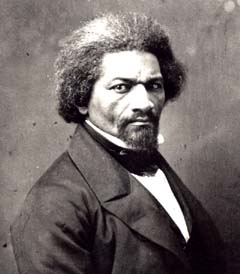I knew of Frederick Douglass mainly through reading the novel Transatlantic, by Colum McCann (2013 Random House), about a third of which is devoted to a narrative describing Douglass’s trip to Ireland. He is invited by protestants, and I think, Quakers, to Dublin, in the first instance. There a maidservant seems to take a romantic interest. Douglass travels down to Cork by the backroads and is struck by the sight of impoverished Roman Catholic peasants, barefoot and in rags. The love interest turns up again in Cork and is disappointed so that the last we see of her is as a forlorn waif waiting at the docks for a ship to America.
A nagging memory also connects Douglass to a novel by Sebastian Barry: I thought it was The Whereabouts of Eneas McNulty but I am not sure. I was really looking forward to hearing more about him from an expert in the field.
Bill Lawson opened by quoting Douglass, “the colored people of this country are bound to keep fresh a memory of the past till justice shall be done them in the present.” From this Lawson explained his own concept of social disappointment. He interrogated the differences between expectation and hope. So this was very interesting as I had always considered that hope is the binary opposite of despair. My understanding, limited I admit, is that despair is the most venal sin because it indicates loss of hope. But here Lawson seemed to be presenting hope as a disastrous evolution of expectation. His argument seems to me to be as follows: Black citizens, such as Douglass, had the expectation that as citizens within the constitution they would be equal with whites. As this expectation has not been fulfilled over time black Americans are being forced to evolve from expectation to hope. Once you can only hope you are not expecting. So if there is no expectation there can only be despair because hope does not include the expectation of change. Lawson, himself, seems to be without expectation of equality for black Americans. He seems to be despairing.
I may have misunderstood the ideas and be misrepresenting the thrust of the argument as when I discussed it with group member, Emilio, on the walk home, we did not seem to agree on semantics. Nevertheless we were both interested in the idea of social disappointment and how that might be applied to other nations or groups. I thought of the suffragettes and votes for women (especially after the recent demonstration by Sisters Uncut at the premier of the new film, Suffragette, – and the supportive comments made by the film’s stars, Carey Mulligan and Helena Bonham-Carter). Emilio said he would be blogging his thoughts on the seminar; these will be more erudite, I think, as he has been researching properly, unlike me – I have just mentioned novels and films. But one thing I did do, as I failed accurately to note down the Douglass quotation, was look up his speech.
Bill Lawson, University of Memphis, ‘Douglass, Memories and Disappointment.’ 7th October, School of English Research Seminar

